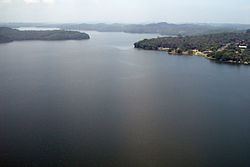Type reservoir Surface area 127 km (49 sq mi) | Area 127 km² | |
 | ||
Location Similar Guarapiranga, Tietê River, Serra do Mar, Parque Estoril, Rodovia Caminho do Mar | ||
The Billings Reservoir (locally known as Represa Billings) is the largest reservoir in São Paulo, Brazil, covering a total of 127 km2. It is named after Asa White Kenney Billings, the American hydroelectric engineer who was instrumental in building it. The Portuguese word represa also means "dam".
Contents
Map of Billings Reservoir, State of S%C3%A3o Paulo, Brazil
The reservoir supplies about 1.8 million people, and also is used for fishing and swimming. In recent years, there have been problems with wastewater and garbage such as plastic bottles, as well as problems associated with unapproved human settlement in the surrounding regions.
History
The hydroelectric projects were built starting in 1927, and the first phase was completed between 1935 and 1937. The project was started by the São Paulo Tramway, Light and Power Company, Limited (a company headquartered in Canada, with British and other foreign capital), today Eletropaulo. Water is drawn from the basin of the high Tietê River to Henry Borden hydroelectric power plant, in Cubatão. In 1956 an underground plant was added. Increasing the power output to 880 Megawatts.
